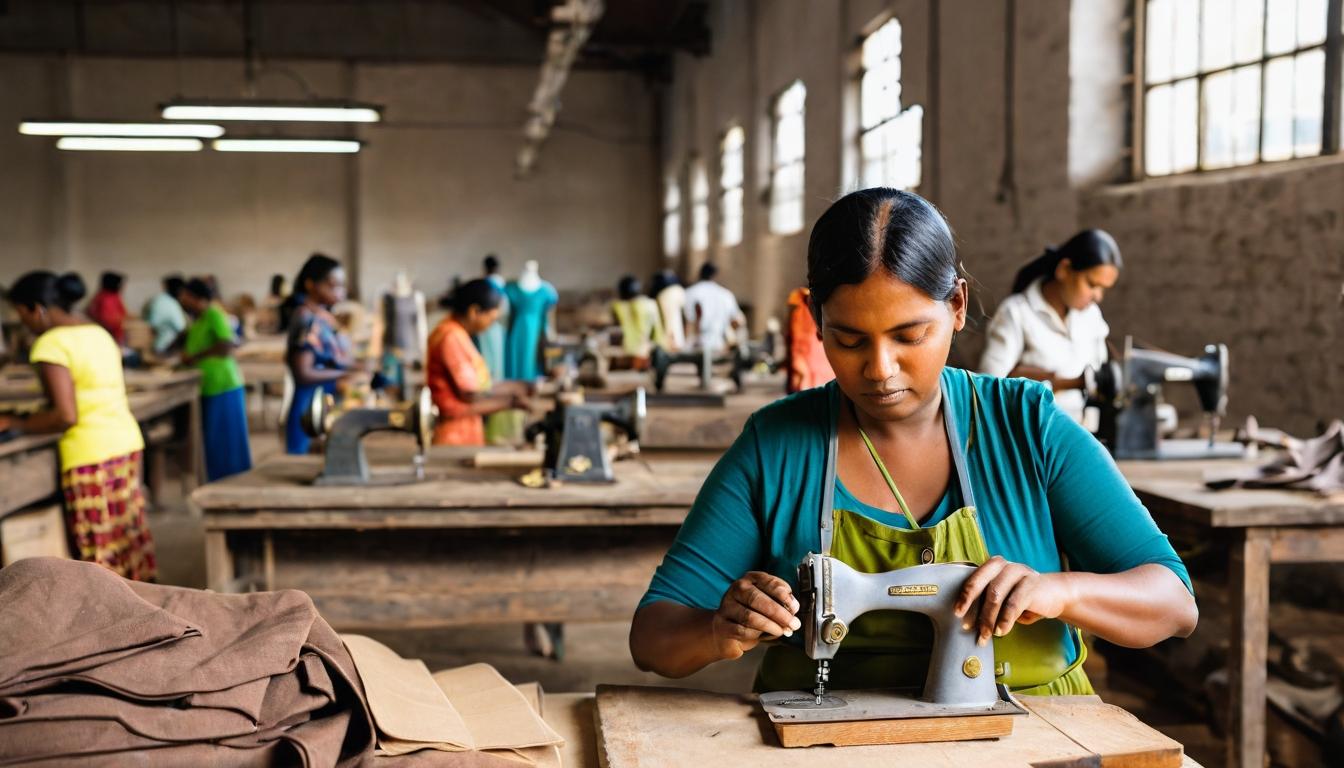When you slip on that beautifully crafted linen dress or those perfectly tailored organic cotton trousers, you're likely thinking about the environmental benefits—the reduced water usage, the absence of pesticides, the biodegradable materials. What you're probably not considering are the hands that harvested the fibers, the artisans who wove the fabric, the seamstresses who stitched each seam. The sustainable fashion movement has brilliantly highlighted ecological concerns while largely leaving the human element in the shadows.
Across rural India, women spend eight hours daily hand-rolling cotton fibers into yarn using traditional charkhas. Their work supplies several celebrated Western sustainable brands, yet these artisans earn barely enough to cover basic necessities. In Portugal, the skilled workers producing luxury sustainable knitwear for European and American labels face precarious contracts and diminishing wages despite their irreplaceable craftsmanship. The disconnect between the marketed story and the manufacturing reality represents one of fashion's most carefully guarded secrets.
Brand transparency reports often focus exclusively on environmental metrics—carbon emissions reduced, water saved, organic materials used. The social audit sections, when they exist at all, typically feature carefully staged photographs of smiling workers in well-lit facilities. What these reports systematically omit are the subcontracting layers that obscure true working conditions, the piece-rate payment systems that keep earnings minimal, and the verbal agreements that leave workers without legal protection.
This isn't merely about fair wages, though that remains a critical issue. It's about recognizing that true sustainability must encompass both planetary and human wellbeing. The current system often treats these as separate concerns, allowing brands to champion environmental causes while maintaining exploitative labor practices. The women who make your clothes deserve more than being footnotes in sustainability reports—they deserve to be central to the conversation.
Consumers increasingly want to make ethical choices, but the information needed to do so remains frustratingly elusive. Certification labels like Fair Trade represent steps in the right direction, yet even these systems have limitations in addressing the complex realities of global supply chains. The most powerful tool for change may be shifting our definition of what makes fashion truly sustainable to include not just what we wear, but who made it and under what conditions.
Some pioneering brands are demonstrating that different approaches are possible. Companies like Harvest & Mill and Known Supply have built their entire business models around radical transparency, sharing not just factory locations but individual artisan stories and detailed breakdowns of how each dollar spent gets distributed throughout their supply chains. Their success proves that consumers will support brands that prioritize both people and planet.
Technology offers promising solutions for increasing supply chain visibility. Blockchain tracking, while still in early stages, could eventually allow consumers to trace their garment's journey from field to wardrobe. Digital platforms connecting artisans directly with global markets are beginning to eliminate exploitative middlemen. These innovations won't solve everything, but they're creating pathways toward more equitable systems.
The responsibility doesn't rest solely with brands. As consumers, we need to ask harder questions and demand better answers. Instead of just inquiring about materials, we should be asking about wages, working conditions, and contractual agreements. We need to support legislation that requires greater supply chain transparency and holds companies accountable for labor practices throughout their production networks.
Real change will require acknowledging that the current sustainable fashion model often replicates the same power imbalances it claims to challenge. The movement must evolve beyond its current focus on environmental metrics to embrace a more holistic understanding of sustainability—one that values the people creating our clothes as much as the planet that provides the materials. The future of ethical fashion depends on making the invisible visible, and ensuring that every hand that touches our clothing receives the dignity and compensation they deserve.
The invisible labor behind your favorite sustainable fashion brands

